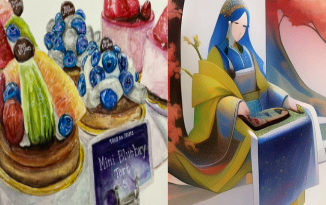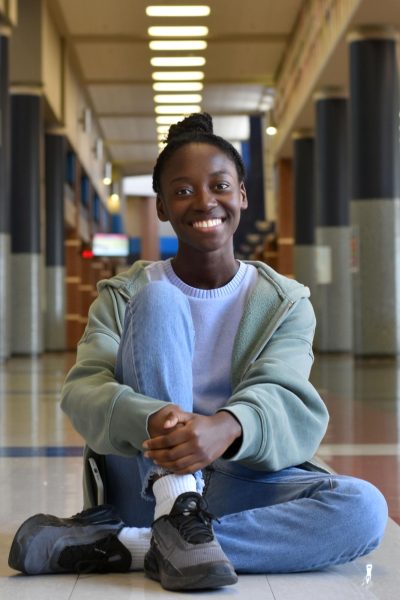Artist animosity
Art students question the ethics of AI art

Spot the difference \\ The image to the left is a piece entitled “Baked to Perfection” created by junior Vivian Nguyen and to the right is the Manga-AI-converted version of the piece. “The hands and facial features are gone and everything is so blurred,” Nguyen said. “Even though it was only inspired by my work, not an exact copy, the AI version isn’t even a quality piece.”
February 6, 2023
Artificial Intelligence (AI)- the modern-day Frankenstein’s monster, forged from the human mind. Only a century ago the idea of technology and machinery learning and problem-solving like humans was uncanny. Today, AI has found its way into jobs, academia, as well as the creative arts.
“The way I see it, AI is almost humanity two,” said junior Aiden Morris. “We’re creating a better version of ourselves. We make AI that thinks the way humans do by pulling from the endless knowledge of the internet.”
In recent months, talk of AI, especially AI artwork, has spread more than ever before with photo and video generators such as Dall-E 2 growing popular on social media. Despite the hype, students such as senior Kamsiyochuwu Ejike-Ilechukwu don’t find these programs enjoyable.
“I was expecting a bit more than what Dall-E 2 actually was, so I was disappointed and eventually got bored of the software,” Ejike-Ilechukwu said.
Similarly to Ejike-Ilechukwu, artists, such as senior Jocelyn Blouke, have reported having a negative experience with AI art. To automatically create artwork, a database collects input from human-made pieces without receiving permission from or giving credit to the model artist.
“AI Art is inspired by actual art styles and a lot of the time, those people don’t get credit for the art style that it’s being generated from,” Blouke said.
Moreover, along with the debate over AI ethics has emerged issues regarding artists portraying artificial art as their own to receive online acclamation. Not only do original creators not get credit for their work, but pieces inspired by their work are being plagiarized by random people.
“When people pass it off as their own, instead of just pressing send, they go and add little mistake areas or clean it up a bit so it looks more like it was actually made by someone human,” Blouke said.
Artists such as junior Heidi Martinez also report AI images’ lack of realism, the quirks that distinguish man-made art from computerized pictures.
“AI doesn’t have a human mind, no matter how hard innovators try to replicate it,” Martinez said.
Although there is no way to completely avoid it, there are ways to differentiate between AI art and man-made art. Artists encourage Dall-E 2 users or any art enjoyers to view digital artwork with caution.
“If you’re really concerned about it, figure out how to get an eye for what is AI and what is not,” Blouke said. “For me, it’s the same way you can tell if something is an ink drawing or a printer drawing. AI will have a smooth look. It will also have weird proportions. If none of those are in hand, look at the artist’s history.”


